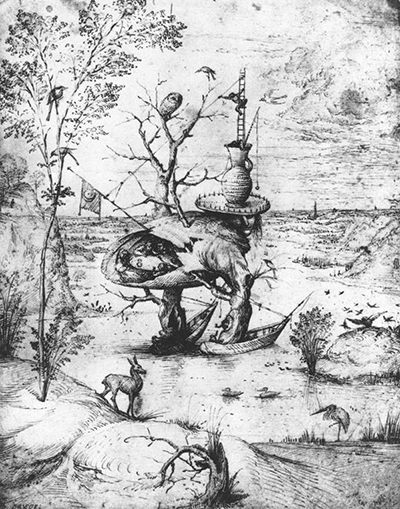The beauty of The Tree Man is its superb detail across the landscape and also a skillful handling of line
There was much to see and appreciate in this work, later used as a basis for multiple copper engravings. Artists of this period would reproduce their work through engravings which would help to spread their reputations across Europe and also provide a substantial new income stream.
You will find several animals finding their way into this drawing, making it clearly more than just a study sketch. Whilst an independant artwork in its own right, there are clearly similarities with the Tree Man who appeared in Hell, in The Garden of Earthly Delights.
It is a significant element, both symbolically and also the amount of space that it takes up, within this darker panel from that classic work. It is believed that the copper engravings which were based on this drawing would actually have further detail added including several new animals. There are also elements to the left hand side with the rocky landscape that is similar to parts of the background in The Last Judgement.
Those lucky enough to see the original drawing at the Graphische Sammlung Albertina in Vienna will be able to spot each carefully crafted detail from the plants and trees to the owls and ducks which are dotted around the composition.
The Tree Man himself is a fictional character who is a combination of humanity and tree, with drinkers filling his torso and a jug sitting on his head. The pose is awkward, as he balances this fantastical collection of items. This bizarre combination is completely typical of Bosch, and probably something that his style is best remembered for.




